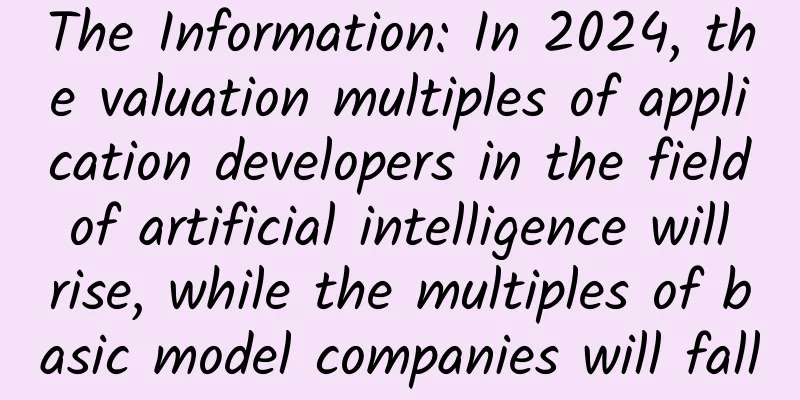Science and Technology Review: Thoughts on the process of automobile intelligence and its key technologies

|
With the rapid development of Internet technology, communication technology, artificial intelligence, and computer technology, intelligence has become a trend and fashion. From smart phones and smart home appliances to smart manufacturing and smart logistics of enterprises, intelligence has penetrated into all walks of life in the whole society. Under the background of "Industry 4.0", "Smart Transportation", "Smart City" and "Internet +", automobile intelligence has become the most important trend and fashion in the development of the automobile industry. Since the 21st century, the development of the Internet, IT technology and intelligent technology has brought great changes to people's daily life, and further promoted people's requirements for intelligent products. For cars, an important means of transportation for modern human travel, people have higher requirements for their safety, energy saving, environmental protection, convenience, comfort and other performance. While cars bring convenience and speed to people, they also bring a series of problems such as traffic accidents, urban traffic congestion and environmental pollution. From the national and social levels, the good development of the automobile industry is not only related to the automobile industry itself, but also to the country's economy, environment, employment and other issues. Therefore, automobile intelligence with informatization and automation as the core has received widespread attention. What is more noteworthy is that under the general trend of intelligent networking of automobiles, in addition to traditional automobile companies, Internet companies are also joining the ranks of automobile manufacturing, and driverless cars and Internet cars have become the focus of attention. Under this development trend, how will traditional car companies, which have always been considered "law-abiding", face the current rapidly developing intelligent trend? In this context, this article will review the general trend of automotive intelligence, outline the relevant development plans and industry status at home and abroad, introduce two technical routes dominated by automobile companies and the IT industry, deeply analyze the characteristics and meaning of automotive intelligence at various development stages, summarize the challenging problems it faces, and put forward suggestions for its technological development. Background of Automobile Intelligence While cars have improved people's living standards, they have also brought about increasingly serious social problems such as energy, environment, safety, and congestion. China has become the world's largest crude oil importer and the second largest oil consumer. Currently, China's automobile fuel consumption accounts for about 1/3 of the total oil consumption, and this proportion is expected to rise to 57% by 2020. Therefore, how to effectively improve energy utilization, reduce energy consumption, and reduce exhaust emissions is a huge challenge facing the country and the industry. In terms of traffic congestion, according to data released by the Ministry of Transport in 2014, the economic losses caused by traffic congestion in China reached 250 billion yuan, accounting for 20% of the disposable income of the urban population. In addition, according to a global traffic ranking report released by INRIX, a US traffic information service company in 2017, traffic congestion caused about 300 billion US dollars in losses in the United States in 2016. Among them, Los Angeles became the most congested city in this report with a congestion time of 104 h/person. In terms of safety, according to statistics from the U.S. National Highway Traffic Safety Administration, the number of deaths in road traffic accidents in 2015 was 35,092, an increase of 2,348 from 2014. The 7.2% increase was the largest in the past 50 years. In 2015, the economic losses caused by traffic accidents in Europe reached 2% of GDP. Intelligent cars based on automation and information technology have great potential to solve energy, safety and environmental problems, and therefore have attracted great attention. At present, there is a consensus on the intelligence of automobiles: by adopting automatic driving technology, 90% of traffic accidents caused by human operation can be reduced; through vehicle-to-vehicle communication and intelligent speed planning, the road traffic rate can be increased by more than 10% in the early stage of intelligent development, and the road communication rate can be increased by 50%~90% in the highly automated stage; in terms of energy conservation and emission reduction, energy consumption can be reduced by at least 15%~20% through economical driving and overall intelligent traffic planning. In addition, with the application of new technologies in the field of electronic information in recent years, the rapid development of the Internet of Things, big data, mobile Internet, automation, and intelligent technologies has also brought good technical conditions for the intelligence of automobiles. Therefore, the problems brought by traditional cars, the new goals and demands for automobile development, and the possibility of intelligent realization brought about by technological development have formed the pull and driving force for the development of automobile intelligence. In this environment, automobile intelligence has become a hot spot for the development of the industry and is causing great changes in the industry. To this end, countries around the world have formulated corresponding automotive intelligence research plans, and the European Union, the United States and Japan have all issued policies and regulations to promote the development of intelligent networked vehicles. China also clearly stated the overall goal of automotive intelligent technology in "Made in China 2025", that is, to formulate China's autonomous driving standards: based on multi-source information fusion and multi-network fusion, using artificial intelligence, deep mining and automatic control technology, and cooperating with intelligent environment and auxiliary facilities to achieve autonomous driving; it can change travel modes, eliminate congestion, and improve road utilization; cars equipped with automatic driving systems have a comprehensive energy consumption that is 10% lower than conventional cars, reduce emissions by 20%, reduce the number of traffic accidents by 80%, and basically eliminate traffic deaths. After "Made in China 2025", relevant ministries and commissions such as the Ministry of Industry and Information Technology, the National Development and Reform Commission, and the National Administration of Surveying, Mapping and Geoinformation have issued a number of policies to promote the development of intelligent cars from multiple aspects such as smart cars, networking, intelligent manufacturing, map information collection, and big data. Two technical routes for automotive intelligence At present, there are two different technical routes for automobile intelligence: one is to gradually improve the level of automobile driving automation, mainly by automobile companies; the other is the development route of unmanned driving technology, mainly by scientific research institutes and IT companies. Gradually improve the level of driving automation The technical route aimed at gradually improving the level of automobile automation is the main idea of automobile companies to promote the process of intelligence. From the perspective of automobile technology, the degree of automobile automation is constantly improving, and it is developing in the direction of intelligentization of assisted driving, semi-automatic driving, highly automated driving and fully automatic driving. In the assisted driving stage, the driver is the main person in charge of vehicle control, and the machine assists the driver to reduce the driving burden. From the perspective of driving rights or driving intentions, the driver holds the ultimate driving rights (Figure 1). The assisted driving technologies currently installed on mass-produced passenger cars include lateral stability control and electric power steering control. Some high-end cars are equipped with automatic parking, adaptive cruise control, lane departure warning systems, etc. In the semi-automated driving stage, the automation level of the vehicle is further improved, and it can have the ability of short-term trusteeship under specific working conditions. At this time, the car has a certain ability to make autonomous decisions (Figure 2). At present, major automobile companies have invested heavily in the development of semi-automatic driving technologies with trusteeship capabilities for specific working conditions (low speed), including anti-collision emergency braking, mobile phone remote parking, congestion following, lane tracking control technology, etc. In the highly automated driving stage and the final fully automated driving stage, the vehicle has a high degree of autonomy. The car can make autonomous plans, decisions and controls, and can achieve trusteeship capabilities for complex working conditions or even fully automated driving (Figure 3). The development of automobile intelligence has been accompanied by the development of automobile electronics technology. The most significant change is the proportion of electronic control units (ECUs) in the development of the whole vehicle. The first appearance of automobile electronics technology was in the vacuum tube radio installed in cars in the early 1930s, when cars were still completely controlled by people. With the advancement of technology, microcomputers have been gradually applied to various subsystems of automobiles to make up for the shortcomings of human drivers and help them complete driving tasks better, while improving driving safety, comfort and fuel economy (Figure 4). Nowadays, major automobile manufacturers have equipped their cars with a variety of driving assistance systems, and at this time, the cost of automobile electronics has accounted for more than 45% of the total cost of the car. It is not difficult to see that intelligence has also become one of the development directions of future automobiles, and the ultimate goal of this development route will be to achieve fully autonomous driving. The growth of the scale of automobile electronics is shown in Figure 5. At the national level, the general principles of the intelligent vehicle automation classification standards issued by different countries are the same, but the details are slightly different. In "Made in China 2025", China divides intelligent vehicle automation into four levels: driving assistance (DA), partial automatic driving (PA), highly automatic driving (HA) and fully autonomous driving (FA), and gives functional definitions for each stage. The typical classification standards for intelligent vehicle technology are shown in Figure 6. Development path of driverless technology Unmanned driving technology is another technical route for automobile intelligence. The main feature of unmanned driving is that it skips the idea of gradual development of automobile automation and directly realizes unmanned driving of vehicles. Its research mainly comes from scientific research institutes and IT companies, mainly for displaying technology, and its application areas can be expanded to special scenes such as closed and semi-closed mines, docks, and large logistics sites. In recent years, the United States, Europe, Japan and other countries have conducted research on unmanned vehicles and have made certain progress. The United States is the earliest country to conduct research in the field of driverless cars and is the most technologically advanced country. At the national level, the Defense Advanced Research Projects Agency (DARPA) provides funding to American automobile companies, scientific research institutions and universities to study the application of driverless technology in the military field. Specific projects include: ALV project, DEMO-II plan, DEMO-III plan, etc. Google is currently the company with the most significant achievements in the field of driverless cars in the world. Google's driverless cars have been tested on the road for more than 1 million kilometers. At present, Nevada, Florida, California, Texas, Michigan and the capital Washington have enacted laws to allow driverless cars to be on the road, although they are currently limited to testing purposes. Germany is also the first country to start researching driverless technology. As early as the 1980s, the University of the Federal Armed Forces in Munich, Germany, began to develop autonomous vehicles in cooperation with Mercedes-Benz. Its representative achievement is the Mercedes-Benz S500 driverless car. In 2013, the car completed a long-distance autonomous driving test on urban and intercity roads, replicating the journey of Mrs. Bell, the wife of Mercedes-Benz, 125 years ago (Figure 7). Although foreign countries started early and invested heavily in the field of unmanned driving, the technological gap between China and foreign countries in this field is not very large. Nanjing University of Science and Technology, Beijing Institute of Technology, Tsinghua University, Hefei Institutes of Physical Science, Chinese Academy of Sciences, Xi'an Jiaotong University, Military Transportation College, Shanghai Jiaotong University, Hunan University and other institutions have made a series of research progress in the key technologies of unmanned vehicles. The National University of Defense Technology has been researching unmanned vehicles since the 1980s. In 2003, it successfully developed the "Hongqi flagship autonomous driving system", which has an autonomous overtaking function under normal traffic conditions on highways, and the maximum stable autonomous driving speed reaches 130 km/h. In 2006, the new generation of Hongqi HQ3 unmanned sedan was successfully developed. The car participated in the Northeast Asia Investment and Trade Expo in September 2006, and participated in the "China Year" event in Russia as China's advanced technological achievements in January 2007. In 2011, the long-distance unmanned driving from Changsha to Wuhan was completed. Judging from the research results of these research institutions and scientific research institutes, China's driverless technology has made great progress, but there are still many difficulties it faces. Problems such as insufficient technical level, reliance on imports for key components, and imperfect policies and regulations are particularly prominent. Although driverless technology has received long-term attention and research and has made great progress, from the perspective of actual promotion and mass application, driverless cars will face legal, accident liability, driving pleasure and other issues if they want to become human transportation. However, driverless technology can play an important role in all stages of the automotive intelligentization process. For example, the scenario-based functions and technologies such as sensor perception, lane tracking, path optimization, and active obstacle avoidance in driverless technology can be transplanted to specific stages in the progressive development route (Figure 8). Connectivity in the process of automotive intelligence Connected Cars In recent years, with the development of new technologies in the field of electronic information, new technologies such as the Internet of Things, cloud computing, big data, and mobile Internet are penetrating into traditional industries. In the automotive industry, the corresponding trend is called automotive networking. Automotive networking refers to the ability of automobiles to perceive the environment, make decisions, and control movement based on communication interconnection. In the environment of the Internet of Vehicles, information such as vehicle location, speed, and route constitutes a huge interactive network. Through devices such as the global positioning system (GPS), radio frequency identification (RFID), sensors, and camera image processing, vehicles can complete the collection of their own environmental and status information; through Internet technology, all vehicles can transmit their own various information to the central processor; through computer technology, the information of these large amounts of vehicles can be analyzed and processed, and then used by vehicles. From the perspective of automobiles, the Internet of Vehicles enables communication between vehicles, vehicles and base stations, and base stations and base stations, so as to obtain a series of traffic information such as real-time road conditions, road information, pedestrian information, etc., and ultimately achieve functions such as improving driving safety, reducing congestion, improving traffic efficiency, and providing in-vehicle entertainment information. The Internet of Vehicles is a technology that integrates the in-vehicle network (establishing a standardized vehicle network by applying mature bus technology), the in-vehicle mobile Internet (the in-vehicle terminal is wirelessly connected to the Internet through communication technology) and the inter-vehicle network (a dynamic network based on dedicated short-range communication technology (DSRC) technology and wireless local area network). As far as the vehicle itself is concerned, the main functions of the Internet of Vehicles are: 1) information service and management, which is mainly reflected in in-vehicle services and Internet entertainment; 2) improving vehicle sensing and perception conditions, providing more abundant external resources and references for the autonomous planning and decision-making of the vehicle (such as traffic information, road geographic information, vehicle-to-the-outside information exchange technology (V2X), big data, cloud computing, etc.); making the car safer, more energy-efficient and more comfortable. Of course, the Internet of Vehicles can also provide social functions such as intelligent traffic management and emergency rescue (Figure 9). It is worth noting that intelligent networked cars are no longer a term exclusive to the automotive industry. A large number of IT technology companies have also devoted themselves to the research of intelligent cars, unmanned driving and Internet of Vehicles technologies. A number of technology companies such as Google and Baidu have also launched their own unmanned cars. However, just like the two technical routes of automobile intelligence mentioned above, Internet companies and IT companies actually want to provide users with a cockpit that is connected to the world, comfortable and warm, entertaining and reliable. The prerequisite for achieving such functions is the high automation of the car (hosting technology) and even the realization of unmanned driving. Therefore, compared with the ideas of traditional automobile manufacturers, Internet and IT companies are more pursuing unmanned driving and pure electric drive to avoid the technical barriers of traditional automobile companies. The complex road traffic environment determines that the unmanned driving stage cannot be realized in the short term. Therefore, the research focus of Internet and IT companies will be on intelligent sensing perception, RFID radio frequency identification and communication technologies necessary for future intelligent networking, and actively seek cooperation with automobile companies to provide them with wireless communication networks and high-precision maps and other services. Connectivity brings new opportunities to the intelligent process From the perspective of control technology, the development of automotive intelligence mainly consists of perception, planning, decision-making and control. In terms of perception and information acquisition, there are two main types: vehicle-mounted and network-connected. In the early stages of intelligent development, vehicle-to-vehicle and vehicle-to-road communications are usually not considered, and the intelligent control of automated vehicles relies on information such as vehicle-mounted radars and cameras. The limitations of vehicle-mounted solutions are mainly reflected in the inability to fully obtain information about the surrounding driving environment, the high cost of large-scale applications, and the lack of all-round scanning of the urban environment. As the level of automation deepens, especially in the highly automated and fully unmanned driving stages, the demand for autonomous driving and the increasingly complex road traffic environment have led to higher demands on the surrounding environment. The intelligentization of the transportation system and the networking of vehicles have made it possible to fill this demand space. In intelligent transportation systems and the Internet of Vehicles, relying on high-speed communication facilities and unified communication protocols, vehicles can fully perceive and understand the complex surrounding traffic environment, road geographic information, surrounding vehicle information and pedestrian information, and then realize autonomous planning and decision-making. From the perspective of control, this opportunity can be expressed as full acquisition of external information (Figure 10). Key technologies for the development of intelligent vehicles Intelligent vehicles are integrated systems that integrate environmental perception, planning and decision-making, execution and control, and multi-level assisted driving. Research on intelligent vehicles requires the comprehensive use of multiple high-tech technologies such as computers, modern sensors, information fusion, communication artificial intelligence, and advanced automatic control. The key technologies for the development of intelligent vehicles mainly include environmental perception technology, vehicle cooperative control technology and driving optimization technology, human-machine interaction and driving rights allocation technology, data security and platform software and infrastructure, technical regulations and verification platforms, etc. The following will be explained from three levels: sensor perception, decision-making and control, and auxiliary platform and technology. Sensor perception level At the sensor perception level, there are mainly environmental perception and multi-sensor information fusion technology, perception and online intelligent detection technology, vehicle driving state estimation method, traffic vehicle and pedestrian behavior prediction, vehicle-mounted and networked information fusion technology, V2X communication module integration technology, etc. At this level, the main function and purpose is to use laser, millimeter wave, ultrasonic radar, camera and other vehicle-mounted sensors and multi-source data obtained through the Internet of Vehicles to provide the necessary conditions for vehicle planning and decision-making. Improving the reliability, security, high accuracy and credibility of information also needs to be fully considered. Decision-making and control level Decision-making and control are the core parts of autonomous driving of automobiles. The purpose of planning and decision-making is to further process the collected information, make plans and decisions based on the information obtained, and realize assisted driving and autonomous driving. Decision-making and control architecture. The network architecture and control of intelligent vehicles are shown in Figure 11. It can be seen that the planning decision layer and the execution control layer constitute the upper and lower control framework of the vehicle. The upper-level planning and decision-making are carried out in the vehicle control unit. The task of the decision-making system is to determine driving behavior, path planning, speed planning and other issues based on the global driving goals, vehicle status and environmental information. The decision-making mechanism should adapt to as many working conditions as possible under the premise of ensuring safety, and make correct decisions that are comfortable, energy-saving and efficient. The lower-level execution layer can be divided into steering, drive, braking and suspension horizontal and vertical systems according to their functions. How the lower-level execution layer can quickly respond to and execute the instructions of the upper-level planning is also a key issue to be studied in the development of intelligent systems. Therefore, from the perspective of the control architecture, automobile intelligent driving is controlled at the vehicle level, and the premise for achieving this goal is coordinated control at the vehicle level. The key technologies include vehicle coordinated control and driving optimization technology, multi-objective optimization theory and methods, vehicle autonomous motion decision-making and high-precision horizontal and vertical tracking control technology, energy-saving technology that integrates vehicle and environmental information, high-speed close-range following/platoon driving technology, and emergency obstacle avoidance technology for vehicles under extreme working conditions. Decision-making and control methods. From the perspective of practical engineering methods, decision-making and control are mainly divided into decision-making and control methods based on artificial heuristics and autonomous learning. At present, traditional vehicles generally use artificial heuristic controllers, and most of the control systems mainly rely on certain laws or rule tables. This method has good engineering applicability, but the control structure is simple and can only process expected results. With the deepening of the level of automobile automation, new requirements are put forward for the autonomous decision-making ability of vehicles. Automobiles not only need to make planning decisions in a specific working condition, such as single working conditions such as overtaking, cruising, and following cars, but also need to have online learning capabilities to adapt to more complex road traffic environments and unpredictable working conditions, and this ability is also an indispensable ability to achieve unmanned driving. At the same time, after the existing automobile control system has been running for a period of time, problems such as aging and wear of components make the calibration parameters at the factory no longer in the optimal state, resulting in a decrease in control performance. The "autonomy" of automobiles can also be reflected in self-maintenance and adjustment. The automobile automatic control system also needs to combine intelligent algorithms to perform intelligent adjustment (self-calibration), diagnosis and maintenance based on automobile driving data and performance evaluation. Considering that the computing unit with a single vehicle-mounted control system as the core can no longer meet the requirements of real-time computing, the method of automatically making decisions by computers through artificial intelligence (state machines, decision trees, deep learning, reinforcement learning, etc.), big data technology, and cloud computing has gradually attracted people's attention. Human-machine interaction and driving rights allocation. With the continuous development of automobile assisted driving and automated driving technology, the relationship between cars and drivers has become very complicated. Various vehicle active control systems based on environmental information perception and drivers with different personalities together constitute parallel binary control of intelligent cars, forming a dynamic interactive relationship between people and cars. Although the intelligence of cars has been greatly developed, it is difficult to achieve true unmanned driving in the short term. Therefore, for a long period of time in the future, intelligent cars will still face the situation of joint control between people and cars. With the improvement of the degree of automobile automation and the expansion of autonomous decision-making authority, the intentions of cars and people will inevitably be coupled and constrained. At the same time, unlike other industrial products, cars are products with strong personalized needs. Users' acceptance of autonomous decision-making and control of cars is an important indicator of the value of cars. Therefore, establishing a humanized and personalized automobile intelligent control system and achieving the optimal overall performance of people, cars and environment are key issues that must be solved in the development of intelligent automobile technology. Compared with the refined perception and control capabilities of vehicles, human driving behavior has the characteristics of fuzziness, degradation, and personalization; and vehicles have relatively weak learning ability and poor decision-making ability for unknown and complex working conditions compared to humans. Therefore, there are two levels of task division in human-vehicle interaction and human-machine co-driving: the first is the switching of driving rights between the driver and the machine control; the second is the fusion of driving rights between the driver and the machine control. From the perspective of switching driving rights, the timing of switching, the smoothness of switching, and the adaptability and acceptance of the driver during switching are key issues that need to be solved. From the perspective of driving rights fusion, it is necessary to focus on the interference of machine control on human operation, the impact of machine control on human driving experience, and the interference of the driver on the control system. Therefore, the human-machine interaction and driving rights allocation issues mainly involve key issues such as the integrated modeling method of human-machine dynamics, human-machine co-driving, driving strategies, human-machine interaction failure compensation methods, and the motion stability theory and evaluation methods of the human-vehicle-environment closed-loop system. Supporting platforms and technologies Information security technology. The networking of automobiles brings better application experience and the possibility of intelligence, but also brings new security risks in terms of Internet connection. From a technical perspective, the information security issue was not considered when the automobile network was designed, and the number of electronic control units (ECUs) controlling the automobiles has gradually increased, and the number of attack points has increased. Automobile information systems have become an important development field in the automobile industry, and the solution to this problem is also a threshold for the realization of intelligent networking of automobiles. Information security technology includes automobile information security modeling technology, a three-dimensional security system of data storage, transmission and application, automobile information security testing methods, and emergency response mechanisms for information security vulnerabilities. The 360 Intelligent Networked Automobile Information Security Laboratory has released the "2016 Intelligent Networked Automobile Information Security Report", which proposes seven security threats faced by intelligent networked automobiles, as well as the main attack methods and necessary preventive measures. The report points out that the information security threats suffered by intelligent networked automobiles mainly include security threats from automobile telematics service providers (TSPs), APP security threats, vehicle-mounted T-Box (telematics BOX) security threats, vehicle-mounted infotainment system (IVI) security threats, Can-bus bus security threats, ECU security threats, and in-vehicle communication security threats. Technical regulations and verification platforms. With the continuous deepening of the process of automobile intelligence, especially in the face of new opportunities in networking, it has become an urgent problem to promote the establishment of intelligent driving assistance technology standard system, multi-network integration test evaluation and standards, and V2X communication technology standard system. For example, in the Vienna Convention on Road Traffic adopted in 1968, a provision on vehicle automatic driving technology stipulates that the driver should always control his vehicle or guide animal power, and the responsibility of driving the vehicle must be the responsibility of the human driver, which limits the autonomous decision-making and control of the vehicle. Therefore, within the framework of the United Nations (UN), the Road Safety Forum (Road Traffic Safety Working Group, WP1) has been committed to revising this provision in recent years. The amendment officially came into effect on March 22, 2016. This amendment clearly stipulates that the responsibility of driving the vehicle can be handed over to automatic driving technology in full compliance with the United Nations vehicle management regulations or the driver can choose to turn off the technology. It can be allowed to be applied to transportation. In terms of technology demonstration application and verification platform, automobile safety technology tests in the past were mostly limited to single working condition tests in smaller test sites. However, with the deepening of intelligence, single working condition tests and relatively simple infrastructure and verification platforms can no longer meet the needs of intelligent automobile technology demonstration application and industrialization. In addition, V2X technology requires vehicles to communicate with other vehicles, traffic infrastructure, bicycles, etc. to obtain a variety of information, which puts forward high requirements on both the size of the test site and the complexity of the working conditions. For this reason, it is necessary to establish a closed intelligent network test area, that is, to establish a real road that is long enough and contains as many working conditions as possible, in which the road infrastructure is equipped with unified standard communication equipment, and the test vehicles also use a unified communication method. Therefore, the construction of test road infrastructure and the development of intelligent technology verification platforms are also areas that need to be focused on. Thoughts on the development of intelligent vehicles From the perspective of the development of automobile intelligence, traditional automobile manufacturers have always been the main force in promoting automobile intelligence. Whether it is the transition from manual driving to assisted driving or from assisted driving to semi-automated driving, it is a process of solving specific problems under fixed working conditions. In the early stage of intelligence, the intelligent control of automobiles depends on the increase of on-board sensors (radar, cameras, etc.) and the improvement of underlying control, while the network architecture and control architecture have not changed structurally. However, with the deepening of automobile networking, the process of automobile intelligence has accelerated significantly. For the automobile industry, the intelligent upgrade that deeply integrates intelligence and networking is different from any previous automobile technology upgrade, because the integration of technologies such as Internet of Vehicles, intelligent transportation, big data, cloud computing, and intelligent decision-making means that the network architecture of automobiles has changed. Therefore, the rise of Internet-made automobile companies has brought unprecedented pressure to traditional automobile manufacturers. However, it is worth noting that the main route of the automobile intelligentization process has not changed, and the "car-oriented" technology development route has continued. Gradually improving the intelligent functions of automobiles and improving the degree of autonomous driving are still the core of intelligent development. Compared with Internet car manufacturing, traditional car companies have obvious manufacturing advantages and technological accumulation. Therefore, the influence of vehicle manufacturers in the field of autonomous driving will surely surpass Internet giants and startups. My thoughts on the development of smart cars are as follows. 1) In-depth development of intelligent components and systems, connecting the lower-level control units, and realizing the actual control of the vehicle by the vehicle controller. Although the independent innovation capabilities of China's automotive industry are constantly improving, and the number and scale of independent brands in the automotive electronics market are also expanding, the core automotive components and system control units related to vehicle control, especially those related to safety performance, are still controlled by foreign companies. In order to follow the general trend of intelligence and take the intelligent route of the car companies themselves, the autonomous capabilities at the vehicle controller level are particularly important. Therefore, while focusing on future smart cars and defining intelligent functions, it is also necessary to calm down and connect the lower-level control units, improve the ability to control the various execution layers of the vehicle, and provide a basis for intelligent planning and decision-making. 2) Keep up with the development trend of automation and informatization. From the development history of automobile intelligence, even with the addition of the new resource of networking, the process of automobile intelligence is essentially a process of improving the level of automobile automation, and a process of expanding the application scale of automotive electronics and automation systems in automobiles. Therefore, in order to truly delve into the trend of automobile intelligence and develop automobile intelligent systems with their own advantages, automobile companies and parts companies involved in the development of automobile intelligence need to make up for the courses of Industry 2.0, 3.0 (automation, informatization) and automation systems. 3) Actively research and develop Internet of Vehicles related technologies. Due to the introduction of Internet of Vehicles, the network architecture and software platform of automobiles need to be changed. Research should focus on system health intelligent detection technology, system intelligent repair technology, vehicle-mounted Internet application integration platform software, and autonomous vehicle-mounted embedded operating system platform software. |
>>: Artificial intelligence predicts death: It is not the god of death, but helps humans live longer
Recommend
Frosted vegetables are too sweet! Eggplant and beans: Don't cue me when I'm busy
The cover image of this article comes from the co...
How to promote on Xiaohongshu? Xiaohongshu promotion tips!
In fact, most of the Xiaohongshu merchants are mo...
iPhone is not secure enough? That's because you don't have two-factor authentication enabled
Apple's operating system has always been known...
Australia bans artificial stone, causing incurable diseases for 600 people
Recently, Australia announced at a conference tha...
Big model drives service upgrade, the exploration and practice of Jetour Auto
On May 15, the 2024 Spring Volcano Engine FORCE P...
Can you not help yourself when you hear others laughing? Maybe it’s because…
When your friend breaks up with his lover, you ge...
Why do mice have so many germs, but cats don’t get sick when they eat them?
This article was reviewed by Zhao Xumao, a young ...
China Automobile Association: China's automobile production and sales will both exceed 30 million units for the first time in 2023
Recently, according to data released by the China...
How is the effect of Baidu Ai Purchasing? Is Baidu Ai Purchasing easy to do?
How is the effect of Baidu Ai Purchasing? Is Baid...
High-precision maps, an underestimated war
In historical confrontations, many famous battles...
In marketing promotion, how should the market be segmented to be effective?
This chapter expands on the previous overview, ma...
B2B industry content marketing, how to produce high-quality B2B content?
This article is the content production part of th...
Eating, drinking, defecating and urinating are all done in the bag. Will the baby kangaroo be suffocated by the smoke?
What is it like to stay in a kangaroo mother'...









